





FARMERS ARE overjoyed to see a halt to freshwater farm plans put in place by the previous government.
Federated Farmers freshwater spokesman Colin Hurst says pressing pause on the rollout of freshwater farm plans until improvements can be made is a practical and pragmatic step from the new Government.
Hurst described the requirement for plans as “nothing short of a bureaucratic birds’ nest for farmers that failed on all three counts”.
Farmers also support the use of farm plans as a tool to help improve environmental outcomes but they need to be practical, cost-effective and easy to use, he adds.
DairyNZ says it makes sense to pause Freshwater Farm Plans while the system is improved.
“It has been our long-standing position that the current system could be improved to reduce cost and complexity, and better acknowledge the environmental progress farmers and the wider dairy sector are making,” DairyNZ chair Jim van der Poel says.
“The pause makes sense and will be particularly welcomed by farmers
Freshwater Plans have started, including parts of Waikato, Southland, the West Coast, Otago, and ManawatūWhanganui.
“It is good to see requirements will be simplified, complexity and cost reduced, and existing industry farm plans better recognised, as we have been advocating for.
“DairyNZ has been working with dairy companies to provide a dairy perspective while the regulations are reviewed, and we will continue to work with the Government to progress a workable and enduring solution.”
The Government says making freshwater farm plans more cost-effective and practical for farmers is a priority.
Associate Environment Minister Andrew Hoggard says the plans support farmers in managing freshwater risks, but the current system is too costly and not fit-for-purpose.
“We have heard the concerns of the sector and Cabinet has agreed to pause the rollout of freshwater farm plans while potential changes are considered. Minor amendments to the Resource Management Act (RMA) will enable the pause.
“Once these amendments are made, farmers will not be required to submit a freshwater farm plan for cer-

ter farm plan system are underway.”
Federated Farmers says the farm plans were a good concept that had widespread buy-in from farmers and the wider primary sector. However, the previous government made it completely unworkable and unaffordable.
duplication of effort added nothing but cost and frustration for farmers, who just want to do the right thing.”
Hurst says the prospect of a five-figure bill for a new farm plan eroded a lot of goodwill from farmers, particularly those who already had a perfectly
More than 10,000 farmers already have some form of farm plan through their milk processor, meat processor or regional council requirements.
None of those existing plans would have been recognised under the current regulations.
“The whole process has felt incredibly messy for farmers, with many facing a legal requirement to get a new plan before proper systems and processes were even in place,” Hurst says.
“Thousands of farmers in Southland and Waikato were expected to have a certified farm plan by February 2025, but until very recently there weren’t even certifiers in place to do the work.”
Federated Farmers understands that after 12 months of the rules being active, only one farmer in the entire country has actually got a certified freshwater farm plan approved.
“Those completely unrealistic timeframes and requirements meant these regulations were set to fail from the get-go,” Hurst says.
“The Government has made the right decision pausing the rollout of freshwater farm plans while the rules are being reviewed.
“There’s no point continuing to waste millions of dollars of farmers’ money trying to force a square peg


HEAD OFFICE
Lower Ground Floor, 29 Northcroft Street, Takapuna, Auckland 0622
Phone: 09-307 0399
Fax: 09-307 0122
POSTAL ADDRESS PO Box 331100, Takapuna, Auckland 0740
CONTACTS
Editorial: editor@ruralnews.co.nz
Advertising material: davef@ruralnews.co.nz Rural News online: www.ruralnews.co.nz
Subscriptions: subsrndn@ruralnews.co.nz
BEEF+LAMB NZ chair Kate Acland believes that after some challenging years, there are some positive signs in the market for red meat farmers.
Acland noted that it’s been a tough year for many in the industry, and the upcoming season is also shaping up to be challenging.
“However we are starting to see some positive signs in the market, we know our sector is strong, resilient, and will bounce back even if it may still take some time.”
She was commenting on B+LNZ’s New Season Outlook report for 202425 which says that while the red meat sector continues to face difficult times, there are signs of ‘green shoots’ on the horizon.
The report forecasts that farm profitability for 2024-25 will remain under pressure, with farm profit before tax expected to decrease by 7.4% to an average of $45,200 per farm.
Although revenue is forecast to increase slightly by 1.1%, this is offset by a projected 1.8% rise in farm expenditure. High costs, particularly interest

payments, continue to impact profit margins, with profitability remaining at levels similar to those seen in the 1980s and 1990s.
A sluggish Chinese economy is expected to continue to weigh on sheep prices. China is by far New Zealand’s largest mutton market and remains our largest single lamb market, so what happens there has a big impact on global lamb markets.
The lamb price is projected to
be $130 per head, up just 1.1% from last season but still 8.2% below the five-year average. Mutton prices are expected to remain steady at $60 per head, which is 46% below the five-year average.
However, there are some positives.
The all-beef price is forecast to be $5.35/kg, 4.3% above last season and 4.8% above the five-year average, reflecting strong demand in the US, where the cattle herd is at its lowest level in over 70 years. European and North American markets are also expected to remain solid for lamb.
The report notes that in the last few weeks we have also seen a significant decrease in lamb processing in Australia. If this trend continues, that coupled with less expected supply from New Zealand, the EU and UK, could see global lamb prices lift higher than current forecasting.
As sheep revenue represents about 42% of average farm revenue, what happens with these prices is key to the speed of a recovery in farm profitability.
Export volumes for New Zealand red meat are expected to be lower in the coming season, with lamb down around 7%, mutton down 7%, and beef down 3%. This is due to a significant decrease in sheep and cattle numbers driven by drought this year. Lamb production is also expected to be down significantly due to the fall in ewe numbers and a lower lambing percentage because of the drought.
Acland says some farmers have started to feel a bit of relief in their debt servicing with a reduction in floating interest rates, following the recent first cut in rates by the Reserve Bank.
“It is possible there could be faster and deeper cuts in interest rates than are currently built into our forecasts,” she says.
“So, while the current forecast for profitability this coming year are sobering, there are a number of factors that could see the recovery be more rapid than anticipated and the medium-term outlook for our red meat exports remains strong.”
JESSICA MARSHALL jessica@ruralnews.co.nz
COULD THERE finally be positive news for the red meat sector after a period of challenging economic conditions?
According to the latest Bank of New Zealand (BNZ) Rural Wrap report, the answer is maybe.
The report states that beef and lamb prices have risen over the past four months, with beef up 16% and lamb up 21%. “We say this not to suggest that prices are strong, far from it in lamb’s case, but rather to acknowledge some changing dynamics of late,” the report states. “Rising prices at this time of year is not unusual, but the

gains over recent months have been a bit more than normal.”
According to the bank, part of the price gain is due to a tightening domestic supply, as evidenced by recent strength in store markets. However, there have also been pockets of price improvement on the export market.
“In NZ, lamb and cattle slaughter numbers have dropped significantly below year earlier levels, tightening local supply and putting upward pressure on prices.”
The report states that an early kill, especially for lamb, saw slaughter numbers for both lamb and cattle tracking around a third below figures for a year earlier in July.
Despite the price rises, beef and lamb find themselves in two different positions from a historical perspective. Lamb prices are low and are currently approximately 13% below their five-year average. Meanwhile, beef prices are at record levels, about 14% above their fiveyear average.

DESPITE LAST week’s drop in global dairy prices, consensus is emerging among economists that the season’s milk price will end up near $9/kgMS.
Steady demand for milk products, tightening global supply and a favourable exchange rate are giving confidence to a solid payout for dairy farmers.
Following ANZ coming out with a $9 forecast milk price, other banks are following suit.
Last month, Fonterra raised its forecast midpoint to $8.50/kgMS. BNZ is also forecasting $8.50/ kgMS and BNZ senior economist Doug Steel isn’t ruling out a $9 milk price.
Steel notes that demand for dairy looks firm, while more question marks are appearing on
the supply side with Bluetongue disease in Europe and Avian flu affecting cattle in the US. Early NZ supply indicators have been positive, he adds.
“We had already lifted our forecast for Fonterra’s 2024-25 milk price to $8.50 before the co-op lifted their own midpoint forecast to the same level. There are risks on both sides to that central view, but if Global Dairy Trade (GDT) prices were to persist around current levels for the rest of the season a milk price around $9 is possible,” says Steel.
Michael Gordon, Westpac senior economist, says that improving market conditions over the last few months have given them more confidence about a solid payout for dairy farmers this season.
He says their revised forecast – now $8.70/ kgMS – reflects three
positive factors.
“First, world dairy prices have been resilient in recent months, giving us more confidence about the outlook for the remainder of the season. Whole and skim milk powder prices have had their ups and downs in recent auctions, but they’ve generally been holding around their long-term averages.
“The second factor is a more favourable exchange rate than we had assumed in our initial forecast.
“Fonterra reports that it has already covered two-thirds of its exchange rate exposure for this season, at an average rate of $0.611 against the US dollar.
“Finally, there are indications that milk supply in the Northern Hemisphere is getting tighter again, which favours the less-constrained Southern Hemi-

sphere producers (New Zealand and Australia).
“Global milk production had seen a strong rebound early this year, particularly in Europe. But more recent animal health issues (a Bluetongue outbreak in northern Europe, and H5 bird flu in a growing number
of US states) are likely to weigh on milk collections.
“On top of this, Chinese dairy farms now appear to be reining in production, in response to a glut of fresh milk that has depressed domestic prices over the last couple of years.”
Rabobank senior
ONION EXPORTS to the lucrative Indonesian market are resuming after officials negotiated an end to costly pre-export methyl bromide fumigation.
In December 2023, Indonesian officials started to strictly enforce a regulation requiring mandatory preexport methyl bromide fumigation, effectively stopping exports. In 2023, onion exports to Indonesia were valued at $45 million.
Assistant Agriculture Minister Nicola Grigg told the recent Hort NZ Conference the regulation cost
the industry about $5 million a week at one point.
Grigg acknowledged the “work of our world-class Ministry for Primary Industries (MPI) and Ministry for Foreign Affairs and Trade (MFAT) officials”.
“MPI and MFAT worked hard to resolve this matter and, last month, New Zealand and Indonesia agreed for onion exports to occur without fumigation.
“Onions New Zealand predicts that ten to twelve thousand tonnes of this season’s onions will be exported
to Indonesia under the new conditions in 2024, worth around $5 million.”
Grigg says while working on new markets, the Government has a big workstream on now to dismantle non-tariff barriers (NTBs) with existing trading partners wherever possible.
“That is why our trade ministers, myself included, are on planes and offshore putting New Zealand back on the global stage and negotiating, and re-negotiating existing settings,” she says.
agricultural economist Emma Higgins notes that milk production from the main global export regions has remained elusive over recent years.
Since the second half of 2021, combined milk production from the Big-7 dairy export regions – the EU, US, New Zealand, Australia, Brazil, Argentina, and Uruguay – has only shown growth in three quarters.
“This weak milk supply growth has helped support steady-to-higher dairy commodity prices in 2024, translating into better milk cheques for most dairy producers. In response to improved margins thanks to cheaper feed prices, farmer sentiment is on the up – or at least steady – in the majority of key production regions.
“Our initial expectation for the full 2025 year is for production to shift upwards on the back of
Grigg challenged the hort sector to take advantage of the comprehensive suite of trade deals New Zealand has secured across the globe.
She notes that there are significant growth opportunities in emerging regions such as South East Asia. Horticultural exports to South East Asia made up roughly 10% of total hort exports last year.
Grigg emphasised the need for building relationships in export markets.
She noted that horticulture export revenue is expected to reach a record

this positive momentum, with a lift of 0.65 per cent year-on-year from the Big-7 forecast. If delivered, this would see global export milk supply above the five-year average growth rate – a rate that should be manageable for dairy markets.”
On the demand side, Higgins says market settings remain mixed, with China still problematic.
“Chinese dairy demand continues to be soft and we’ve recently revised our consumption estimations lower for 2024. As the market continues to recalibrate, we anticipate China’s net imports to be 12% lower in 2024 year-on-year, with skim milk powder import volumes likely to bear the brunt of the adjustment, dropping by up to 30% compared to 2023 levels,” she says.
Rabobank is forecasting a milk price of $8.60/ kgMS.
$7.1 billion in the year to 30 June 2024 and is rapidly heading towards $8 billion.
“This is an impressive result, especially considering the monumental curveballs that have been thrown your way in recent years.
“The Government is committed to backing your sector’s success, and we stand ready to do our part to enable horticulture to grow – but a lot of that success will come down to the leadership and the actions you choose to take to implement your vision.”
– Sudesh Kissun


A HORROR story - that’s how Federated Farmers describes new research looking at forestry conversions’ impact on water quality.
The Our Land and Water National Science Challenge (OLW) white paper ‘Why Pines?’ sought to summarise the results of four recently completed research programmes that investigated how land use changes might change in the future to meet New Zealand’s environmental goals.
The four research programmes all found a likely increase in pine plantations on land currently used for sheep and beef farming.
Federated Farmers meat & wool chair Toby Williams says the report
reads like “a horror story for New Zealand’s farmers and rural communities”.
“The study makes it very clear that under current policy settings we will continue to see millions of hectares of productive farmland plastered in plantation pine trees,” he says.
Williams says the report, which found that one fifth of sheep and beef country would need to be converted to pine forest to meet freshwater goals, must be of concern to the Government.
He adds that the current Government scrapped the He Waka Eke Noa (HWEN) pricing programme because it would have that same effect.
“If the Government wants farmers to increase the value of our exports and adapt to changing

conditions, we need to be able to change our land use as opportunities pop up,” he concludes.
Three factors influence the research findings: real and true physical and economic reasons; constraints and choices related to modelling the future; and the


Heiniger capital equipment, is trusted by New Zealand farmers, contractors and shearers to get the job done safely and efficiently.
Because we care about your safetywhile working.
current policy settings and incentives included in the modelling.
The report forecasts flow-on impacts for rural communities, including decreased employment, a “hollowing out” of smaller rural communities and a consequent reduction in the health

TPW Xpress Woolpress
With industry leading safety features, the #1 selling and most trusted woolpress helps to keep you and your workers safe in the shed. The TPW Xpress now comes with the new indicator with audible and visible alarms that let you know when you’re approaching the target weight.
Watch our equipment in action!

and wellbeing of those left behind.
It also notes implications for food security and food access.
“After the experience of Covid-19 and worldwide supply disruptions, people are more aware of the importance of having and maintaining secure access to locally grown food,” the report states.
“Incentives or subsidies may be needed to promote locally grown food and maintain some level of production capabilities, particularly for those commodities that are not economically profitable at farm scale.”
Dr Jenny WebsterBrown, co-author of the report, says the results raise “significant concerns” but do not predict an unavoidable future.
“The results are surprisingly consistent and
show what could happen if current policies and economic signals do not change to accommodate different ways of thinking about our land use,” says Webster-Brown.
She says there is now a clear section of travel, unless government and the agriculture sector act.
“It is not going to be easy, but there is still time to redirect our system to a pathway that better reflects the aspirations of our farmers and all New Zealanders,” she adds.
New Zealand Forest Owners Association
NZFOA chief executive, Dr Elizabeth Heeg, says that while the sector welcomes the science and modelling behind the report, a more critical examination of land use evidence is required.
“The recommendations lack scientific evi-
dence, and the narrative fails to frame forestry as an important land use,” Heeg says.
She says the white paper’s findings mirror previous research that looks at water quality in pine forests.
“Paradoxically, that evidence doesn’t seem to be the outcome OLW were looking for, with the authors raising more concern over forestry’s water quality than other land uses detailed in the report,” Heeg says.
“It is disappointing to see the results interpreted in such a dramatic way when pine is evidently a tool New Zealand can use in its policies and practices tool kit,” she says.
Heeg says the reports emphasis on forestry’s expansion doesn’t mean other land uses won’t be accommodated.
Bred for high performance and ‘cast iron’ constitution
We deliberately challenge our Romneys by farming them on unfertilised native hill country in order to provide the maximum selection pressure and expose ‘soft’ sheep.

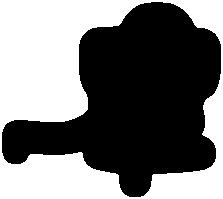





The world’s leading shearers trust the #1 selling shearing plant in the world, winner of multiple WorkSafe awards. The Evo delivers industry leading safety features, impressive performance and superb reliability
TPW Backease Hoist
Industry professionals trust the versatile, compact and cost effective TPW Backease Hoist to safely lift loads of up to 600kg with extendable 1.2 - 1.8m boom. At only 78kg, it’s easy to install with no loss of load space and features hydraulic lift and pressure regulated downwards movement

Over the last 20 years ewes (including 2ths) have scanned between 185% and 210% despite droughts. Over the same period weaning weights (adj. 100 days) have exceeded 36kg from a lambing % consistently above 150%.
• All sheep DNA and SIL recorded.
• Ram hoggets have been eye muscle scanned since 1996. IMF scanned since 2023.
• Ewe hoggets have been mated (to Romney sires) for over 20 years.
• Breeding programme puts an emphasis on worm resilience - lambs drenched only once prior to autumn. FE tolerance introduced more recently.
• Scored for dags and feet shape. Sires DNA rated for footrot and cold tolerance.
• We are ‘hands on’ breeders with a focus on detail and quality.
• We take an uncompromising approach - sheep must constantly measure up.

Romneys & South Suffolks GEOFF & BARB CROKER Longbush, RD 4, Masterton email: bob_barb@slingshot.co.nz • Ph: 06-372 7820 www.glenviewromneys.co.nz

FARMERS AND forestry owners in the Lawrence district of South Otago are hoping tempers will cool after simmering tensions between them prompted a crisis meeting called by the local cop.
The local golf club was packed for the meeting, late last month.
At issue is the number of forestry blocks in the district which farmers say are bad neighbours, harbouring feral pigs and other pests.
Sheep and beef farmer Jim Crawford, whose farm is bounded on three sides by three different forest owners, said feral pigs can break a hole in
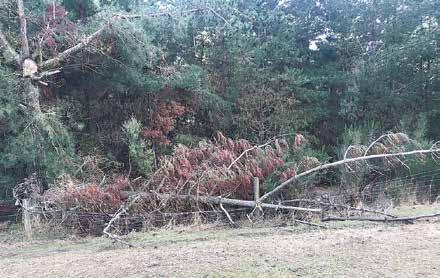
even a good fence, while forest debris can also damage the fences.
Pigs then get in and root up pasture, and hunters trying to cull them are forbidden to


Calgary Stampede & The Rocky Mountains
Jul 5th, 2025, 16 Days
Embark on a 16-day adventure through the heart of Canada's stunning landscapes and vibrant culture. Experience the thrill of the Calgary Stampede - world-class rodeo action and the Chuckwagon event.
Indulge in luxury aboard the Rocky Mountaineer Train from Banff to Vancouver, passing through the majestic Continental Divide. Discover the natural
follow them back onto forestry land, said Crawford.
“They’ve got to call the dogs back. Then my gripe is, they only come back the next night.
“That’s what really gets up my nose. They [forestry companies] are opting out of their responsibilities for what’s really going on.
“All these years, I’ve been fixing fences when their trees are falling over.”
But Crawford singled out one company, Port Blakely, for making contact after the meeting.
“They were very understanding and were very good to deal with, which I appreciate.”
Wenita Forest Products CEO Dave Cormack, who spoke at the meeting, said the main problem was a lack of communication.
OUT-OF-CONTROL POPULATIONS of goats, pigs, deer and other wild animals are costing farmers “an absolute fortune” and taking a significant toll on indigenous biodiversity, says Federated Farmers pest management spokesperson Richard McIntyre.
“This is a very serious problem that’s costing Kiwi farmers almost a quarter of a billion dollars every year. These pests aren’t just chewing into farmers’ bottom lines; they’re also chewing into our native bush and completely undermining conservation efforts,” McIntyre said.
His comments came in a press release coincidentally published a couple of days after the Lawrence meeting – although it pointed the finger more at the Department of Conservation than at Forestry.
McIntyre told Rural News that Farming and Forestry can be good neighbours, but forest owners need to control their pests.
They tend to control pests when their trees are vulnerable during the establishment phase but not once there is no economic benefit to it, he said.
A recent survey of more than 700 Federated Farmers members across the country showed feral animals were costing them at least $213 million a year. That figure includes a direct spend of $5.45 per hectare on pest control ($74 million per year) and $10.22 per hectare in lost production ($139 million per year).
“That is a huge cost for rural communities to be carrying at a time when many farming families are already struggling to turn a profit,” McIntyre said.
“It’s also a very conservative estimate and doesn’t include things such as the cost of restoring damaged pasture, fixing broken fences or the loss of trees.”
McIntyre said things were particularly bad on farms bordering DoC land.
so they don’t understand all the things that are reported to forest owners.






“We just need to understand each other a little bit better and communicate with each other a little bit better because the forest owners can’t fix problems that they don’t know about.”

Cormack said that for many farmers having trees next to their properties was a new situation
Rayonier Matariki Forests regional manager Hamish Fitzgerald told the meeting that Rayonier had culled 2000 possums, more than 1000 pigs, 150 deer and 100 goats from just one of their blocks.
Cormack said Wenita encouraged recreational hunters but only if they





have a permit. The company had a health and safety responsibility to their workers not to allow random access.
Federated Farmers Otago President Luke Kane, who also attended the Lawrence meeting, said there was a lot of new forestry in the district and populations of pests, especially pigs, had ballooned.



WHAT SHOULD be the role of the next generation of agricultural consultants?
According to AgFirst chief executive James Allen, a deep understanding of technologies and databases and the ability to recognise how these can directly benefit the farmer client will be vital.
Allen has just completed his Nuffield Scholarship on defining the role of the next generation agricultural consultants. He says the role of the farm consultant has continued to change over the years and that the pace of change is now quite rapid with such technologies as AI.
He says the role of the consultant will be to unscramble and make sense of data and present
THE FUTURE will see a continuation of the trend to fewer and larger farms, most of which will be ‘family corporates’, says James Allen.
He says larger farms place more emphasis on reporting and information requirements than smaller ones.
Allen says he’s been talking to universities around the country about the implications stemming from his report and he says “they get it” and are starting to think about how they can best meet the needs of industry in the future.
He says while there may need to be changes to degree courses, it is essential for farm consultants of the future to have to have a core understanding of the basic principles of farming.
“The likes of an AgScience or BAgCom that gives an understanding of soils, pasture and livestock and how to integrate these is critical. What we need overlayed with that is a new set of skills around such things as data base management, GIS software skills and getting the best out of AI technology,” he says.
the information in such a way that farmers can use it to make better decisions and deal with new requirements to change

their operations.
“AI and technology are here to stay, and people should not shy away from it, rather just start experi-
menting with it and what it can do for their business. We are moving to precision agriculture, whether we like it or not, so that goes down to managing the farm by the square metre and animal by the animal, not by the
Improve the overall performance of your knockdown herbicide including the speed of burndown with Hammer ® Force.
• Fast acting: Faster burndown than glyphosate applied alone
• Enhanced control: Helps improve overall control on tough broadleaf weeds such as Mallow
• Non Residual: Nil grazing or drilling withholding period, no additional restrictions to the use of glyphosate
herd. Our farms are so big these days we don’t understand what each sheep and cow is doing, but we now have technology to do that. In some ways it’s back to the old days, thanks to technology,” he says.
Technology in all its forms will likely mean some changes for the rural professional companies that service the farming industry. Allen points out that the days of a farm consultant sitting down with a calculator and working out covers and grass growth is over. Most farmers can work this out for themselves thanks to automation. But he says with new emerging technologies there will be a need for specialists.
He says the larger consultancies may employ specialists while the small firms may retain their own niche.
“I think it will be a bit of both. For example, in Ag First I have a ruminant nutritionist and an HR specialist and LEC mapper, so I can call of any of these specialists for a particular farm.
We will continue to see an evolution of that, so you will see people with really specialist skills but equally you still need that people-person with strong business management skills to tie it all together,” he says.
Allen says the traditional role of the farm advisor has been one around tech extension or knowledge transfer. Now we are shifting to a position where knowledge is going to become more commoditised with ChatGPT or AI search engines used to find what you want to know, quickly.
“As well as having a clear, deep understanding of new and emerging technologies, they must have the soft skills - the interpersonal skills, running businesses, working with families and driving that behaviour change,” he says.


The JCB Series lll has taken telehandling to a new level. Redesigned and re-engineered from the ground up, the JCB Series lll has raised the bar — literally.
Designed to be productive, without compromising safety or comfort
You’ll wonder how you farmed without it! jcbagriculture.co.nz
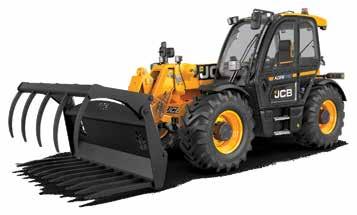
peterb@ruralnews.co.nz
BREEDING BETTER
and more efficient sheep is the major focus of a Pāmu (formerly Landcorp) farm in the Central North Island.
Goudies Station near Reporoa runs a nationally recognised elite flock of Romney rams which have highly desirable traits, with new ones being developed – including lower methane emissions.
The farm is unusual in that it’s a long, skinny 1779ha property that runs for 18km, providing a natural firebreak between a large Timberlands forest.
Tim Bowron and six permanent staff run the property which also includes 1400 hinds and a specialist dairy beef breeding unit which runs 350 cows.
The soils are light pumice, but regular rainPETER BURKE


AT JUST about every agri-related conference these days, the issue of methane emissions is raised.
A wide range of research is being done internationally and in New Zealand and Pāmu is part of that. They have a programme to see if individual sheep produce less methane than others.
To find this out, the sheep are fed a special diet and then put in a special portable chamber which can measure their methane emissions.
Tim Bowron says such a trait is highly heritable and somewhat random, so they set aside sheep that
have this trait.
“This doesn’t mean to say that we outrightly reject animals without this trait because often they have other highly desirable ones that we value,” he says.
On Goudies, many of the ewe lambs are kept as replacements or sent to other Pāmu farms and any culls are sent to the works. The rams with highly desirable traits are sold by private treaty on the farm.
But like all farmers in New Zealand, times at Goudies are tougher than they were a few years ago. Bowron says demand for rams
has declined with low wool prices and some movement to self-shedding sheep.
Forestry and other land use changes are also a factor and, as they have seen for the last couple of years, prices that sheep farmers are getting for their stock have dropped significantly and are unlikely to return to the levels of past years.
All of this points to the need for the sheep sector to continue to do what it has always done – being at the forefront of innovation and good science, the likes of which are taking place at Goudies Station.
fall and early morning dews ensure quality pasture covers.
The sheep stud, says
“That’s why a lot of clients come to us to buy rams.”
Bowron, has been running for 14 years on Goudies, but the stud has at least 50-years-worth of breeding behind it now. It’s particularly renowned for its facial eczema (FE) resistant flock.
“That’s why a lot of clients come to us to buy rams,” he says.
But it’s not just FE that Bowron and his team at Goudies are working on. They also have a focus on animal constitution – in layman’s terms, breeding a strong ewe able to lamb for five or more years. At Goudies they have been ruthless about structure, and culled 30% of their ewe flock seven years ago. They have maintained the same selection pressure over the past seven years for stock that don’t meet their strict criteria.
There is also a programme on ewe fertility. Ironically, back in the 1980s, a breed called the Finnish Landrace was
introduced into New Zealand because our average lambing percentage was low and one of the attributes of the Finnish Landrace was to produce multiple births – in particular triplets. Bowron says ewe fertility has now become a problem for many New Zealand farmers.
“We have flocks in the country that are scanning at 235% and some flocks where more than half the ewes are producing triplets, and that’s not what farmers or finishers want. This is because the mortality rates are too high, and the lambs take too long to finish,” he says. Bowron says getting the right NLB or number of lambs born to each ewe is important and he says the commercial world is very happy with a ewe that has about 165%. Incidentally, the lambing percentage at Goudies sits at around 160%.

Don’t put good fertiliser on compacted soil which can’t absorb it. If your soil can’t support 15cm root growth and good worm population check for compaction. You could need aeration. In dollar terms, what would 20% production increase mean to your yearly turnover?
YOUR GREATEST ASSET IS THE SOIL




THINGS ARE getting busy again in the water sector across both the agriculture and metro areas. In response, the water data and technology company
ADR/Watermetrics says it has reorganised itself, with new capabilities and capacity, including new staff in Hamilton and Oamaru.
ADR/Watermetrics began as a water data collector and has a history in performing in this area.
The nationwide company supplies and services technology like flow meters, soil moisture and EC probes, weather stations, hydrostatic and ultrasonic level sensors.
“This equipment provides data,” it says. “This data is the base to make informed management and water use decisions.”
As an example, it says there are many cases of over watering with irrigation and it’s not unrealistic to say that accurate data can save 10-20% of the water without reducing yield. The pumping cost savings dwarf the actual data costs.
“We have specific easy-toread presentations, and a backup

team to help you understand and better use the information we provide. Our data displays are clear and simple to interpret.
“We can send alerts from this data for critical points to your cell phone. This saves physical staff time, providing peace of mind for the manager.”
For example, the soils presentation clearly shows the effects of irrigation applications, helping calculate future application rates.
ADR/Watermetrics
The company says its soil probe measures at 100mm intervals, giving in-depth detail of the soil status for moisture, salinity, and temperature. This is enhanced with weather forecasting, crop agronomy requirements and any water supply concerns.
It notes that effluent or waste application to land is an important issue.
“The timing and amount of application is critical to how
the soil will respond and any damage to adjoining waterways.
Understanding moisture levels prior to applications is critical, as is understanding the salinity, which correlates with nitrogen and other mineral levels. Specific crops perform best at certain EC levels.
“Water use data must be presented in a timely and accurate way to councils. Our staff are experienced with this and maintain a credible
We connect your water meter data with climate, soil moisture to give a real basis to irrigate or use water with:
• The right amount
relationship with councils on your behalf. Verification work is undertaken with Blue Tick qualified staff and we do verification work nationally.
“With stock water we can set up tank or pond level readings with alerts.
“This saves a lot of farm staff time travelling to check supplies. We can work through volumes identifying wastage.”
The company says its new Axioma meters are for smaller 15-50mm pipes and can measure what water has gone into a system and see if the right amount has arrived where it should.
This is extremely helpful for leak detection work and has literally saved farmers time and money, it says.
“Many water users now need to supply clean water to their houses, apartments or rural stock water schemes.
“Not only can we measure and monitor tanks and flows we can set up and control clean water systems.
“This clean water aspect is growing in demand and requires the right kit for the specific situation.”
• Tailored Presentation
• Real Time Data
• Action Alerts
• Mobile Friendly

• Tank level – Axroma meters - pipe 15-50mm
• At the right time Clients use us because
• Good Value... cost effective data
• Easy setup and easy to use

• Uncomplicated presentation giving simple farm management decisions
• Nationwide service and backup
• We are well established being the leading provider of water measuring systems
• Equipment is reliable land well proven to perform
• We support you in your audit and environmental reporting

CONFUSION SEEMS to reign in the supermarkets, especially in China where consumers are faced with multiple messages about products and have little time to work out if the messages are correct.
That’s the view of Stefan Vogel, general manager of Rabobank Research for Australasia.
He says a myriad of messages coming at consumers from all directions, about what to buy and what is best, put them in a quandary and often they don’t know what to do.
He told delegates at the recent NZ Institute of Primary Industry Management (NZIPIM) conference there many changes taking place for consumers. He says infla-
THE FOOD service industry is another target for NZ, especially when it comes to lamb, says Stefan Vogel.
That sector needs to be convinced that the products we are offering are the important ones, so they will push sheepmeat. He says it’s fantastic to go to a restaurant these days and see lamb rack on the menu that has come from certain producing group, a particular region and is a high-quality product.
“I think the right way to go is for a higher-quality product at the higher end of the value chain,” he says.
Vogel says there will likely be growth in sheepmeat consumption in China in future but adds it will not be at the levels it was in the past.
“Consequently, NZ has to be very agile in the marketing of sheepmeat products,” he says.
tion and high prices have forced them to look seek best value for money when food shopping. The result is that people have effectively traded down, putting products such as lamb in a difficult spot.
“We have just done a study in China comparing sheepmeat and beef
to the traditional big one in China, which is pork. It shows that beef and poultry are considered healthier, and we actually see a bit more growth on the consumption over there for beef poultry and seafood compared to pork… good news for NZ,” he says.

and he doesn’t see this changing for another 18 months.
For NZ, combating that confusion at the supermarket is the chal-

lenge, he says. Later this year, our meat industry is launching a major ‘country of origin’ campaign in China, highlighting the attributes of our meat and its advantages over our competitors.
Vogel says people don’t have a long attention span.
“With things like Tik Tok around you have only a few seconds to tell your message, so that must be catchy and visual. I was in China a few weeks ago and there was nice sign on top of the shelf making one product stand out. When I looked closer, I saw it was Australian beef promoted as something special, natural and healthy and I never saw anything like that about NZ,” he says.
The other issue exporters to China need to respond to is that people there are not
used to cooking – especially lamb. He says the younger generation live in small apartments with small kitchens, time is precious and often convenience becomes their priority. Prepared or partly prepared meals can help overcome that problem for them. For example, having meat that is marinated will help win over consumers.
“But as well as being convenient, the food needs to be healthy and address that issue of being good for the environment.
“Packaging that all together is not easy but that is challenge of the next few years,” he says.
“It takes a bit more skill to make lamb tastier and that is a challenge we can overcome by thinking how we can we deliver a product that nicely fits into their pocket.”
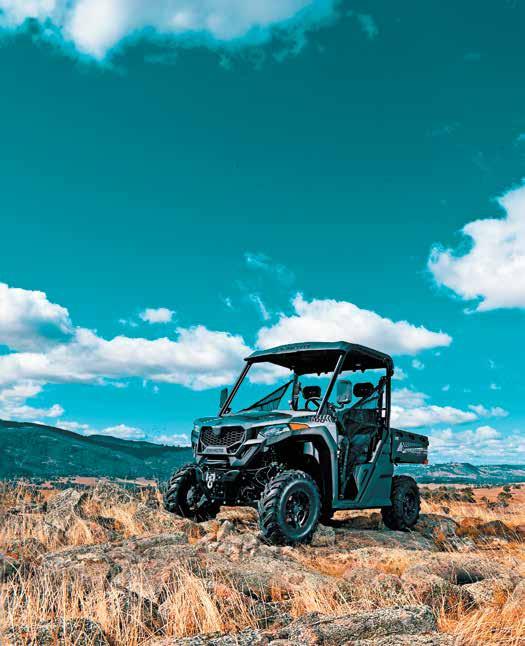
is a choice. When someone sexually harasses someone, it’s an effort to bring the recipient ‘down a peg or two’ by attacking that person’s dignity through sexualised means.
It’s daring and so gives the perpetrator a quick ‘kick’ in the form of a momentary illusion of elevated power, hilarity or status. The same act of sexual harassment that provides perverse power for the perpetrator has devastating impacts on the recipient.
Sexual harassment can take on unique forms. Whether it’s a crass joke
to the lads comparing a worker’s breast size to cattle teats, or a slap on the bottom as someone exits a truck, it can really sting. Where it happens at work, the impacts spill into culture like lava, searing holes in safety, ruining respect and charring trust and belonging within teams. Ultimately though, it’s workplace leaders who face the heat where sexual harassment simmers away in the workplace – because this is the law.
Yet, sexual harassment has been allowed to infiltrate all types of workplaces nationally for years. Statistics bounce about from study to study, but the research
is clear that the behaviour is systemic. In one study, I travelled Australia to interview more than 100 rural women from industries including mining, farming, nursing, policing and retail. Of these participants, 73% said that they had experienced unwanted sexualised behaviour in their rural workplace.
The Backdrop of the Bush: “It’s all a bit different out here.”
Rural workplace environments often have a history of male influence and may also feature any combination of extreme temperatures, noise, isolation, language, physical labour. Workers are frequently contracted on

a seasonal basis and it is important that swift trust be developed for safety and wellbeing.
Humour is often a pressure relief and banter is critical for morale, wellbeing and building team spirit. However, sometimes sexual jokes or innuendo become part of the performance of ‘larrikinism’ for mates, albeit without consciously setting out to humiliate, intimidate or offend another co-worker.




Sexual harassment in rural workplaces is
fraught with unique complexities which may pose additional challenges. For many women, the prospect of being labelled a “dobber” keeps them silent. The fear of retaliation—social ostracism, whispers of “frigidity,” or worse—transforms the workplace into a minefield. Women’s experiences become dismissed as “just jokes,” and complaints are trivialised as “a storm in a teacup”. In these environments, the risk of speaking up often outweighs the poten-
tial for justice. Employer duty to eliminate sexual harassment: “Let’s just get on with it.”
Gone are the days when workplace leaders could afford to dismiss this behaviour as a lower-priority concern. In New Zealand, the Human Rights Act 1993 makes sexual harassment unlawful in areas of public life, such as employment, housing, and education.
Even if the sexual harassment is unintentional and the person is unaware of how their behaviour is affecting another person, they can still be held responsible for their actions.
Simple strategies, such as clearly defining sexual harassment for workers and establishing clear reporting channels, can make a significant difference.
Leadership plays a pivotal role in dismantling this unacceptable culture. We need proactive leaders across all sectors, such as mining, agriculture, or small businesses
who not only believe in a zero-tolerance policy but also demonstrate it. Employers must not only draft policies but actively ensure they are communicated and enforced. A ‘tick and flick’ approach to documentation is insufficient; firm principles of duty of care must be woven into the fabric of their workplaces. This marks a new dawn for workplace culture and all of us have a role to play. By fostering strong workplace cultures in line with law, challenging attitudes about gender at work and encouraging open dialogue, we can transform “the way that things are done out here”. Together, we can reclaim the dignity and respect that every worker deserves, ensuring that our rural workplaces are safe, joyful and free from sexual harassment.
• Dr Skye Charry, chief consultant S.A.C. Consulting Australia and Associate Professor (Law), University of New England
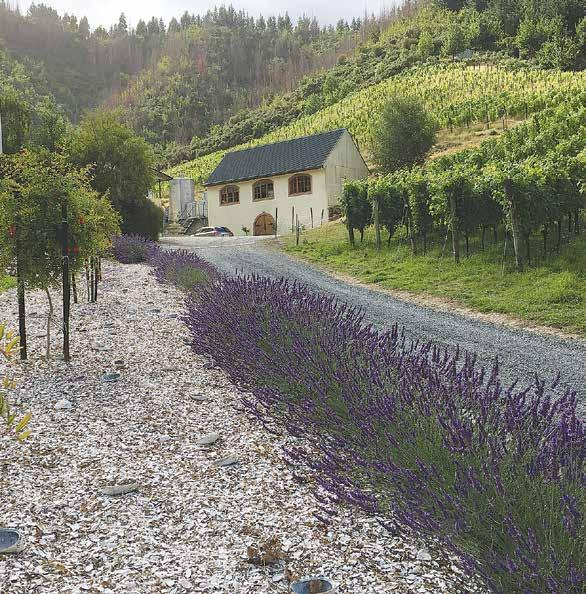



THE FUTURE of Fonterra is assured, so long as farmer owners stay engaged in the governance of the industry and the business they collectively own.
That’s one of the reflections from longserving Fonterra director Leonie Guiney as she contemplates retirement from the co-op’s board this November, having served the maximum nine-year term for Fonterra directors.
Cooperative business models form a major part of New Zealand’s economy. According to the New Zealand Institute of Directors, the total gross revenue of New Zealand’s top 30 co-operatives represents approximately 20% of the country’s GDP.
Farmer or supplier ownership and control is a core tenet of many
of these co-ops, so it is critical that a pipeline of strong, capable governors come through each generation to lead the organisations.
Historically, New Zealand had many smaller agricultural cooperatives that provided introductory governance roles for rural leaders, many of whom went on to serve on the boards of our larger agribusinesses. They were breeding grounds for business acumen and governance skills, and as such, more formal governance programmes weren’t a natural pathway.
Fast forward 20 years and the amalgamation of these smaller cooperatives into larger entities like Fonterra means the industry now relies on a more formal pathway of training and development to bring forward leaders

from within the farmer base.
Formal programmes such as Fonterra’s Governance Development Programme, the Kellogg
Kylie Leonard, a current Fonterra Co-operative Councillor and Fonterra Governance Development Programme alumni, is one example of
the pipeline in action.
A 2023 Nuffield Scholar, Kylie has held a few governance positions both in the non-profit and business sectors. She is a current Fonterra Cooperative Councillor, the 2018 Dairy Woman Community Leader of the Year and was a finalist for Dairy Woman of the Year in 2019.
Leonard says that having directors with a deep connection back to the farmgate benefits everyone.
‘’Decisions made by these boards flow onto our individual farming businesses and communities. Directors will still make commercial decisions, but having an appreciation for how they will impact on farmers is critical.
‘’The nature of farming makes us effective governors. In our
own businesses, we’re accountable for strategy and performance, managing scarce capital, and making sound judgement calls. Governance requires many of the same skills, just on a larger scale.
‘’We formed these cooperatives for our mutual benefit, so who better to step up and govern than the farmers and growers that own them,’’ says Kylie.
Applications for the 2025 Fonterra Governance Development Programme open on 9 October and close 1 November 2024.
All Fonterra shareholders and herd-owning sharemilkers supplying Fonterra can apply. A limited number of places may also be made available for members of LIC, Foodstuffs and Silver Fern Farms.

COMMON SENSE has prevailed.
The Government decision to pause the rollout of freshwater farm plans until system improvements are finalised is the right call.
The decision will be welcomed by farmers and regional councils in areas where freshwater plans have started, including parts of Waikato, Southland, the West Coast, Otago, and Manawatu-Whanganui.
The Government’s view is that freshwater farm plans support farmers in managing freshwater risks, but the current system is too costly and not fit-for-purpose. However, while the Government simplifies requirements and enables more local catchment-level solutions, regional councils had been legally bound under the RMA to get farmers to comply with freshwater plans.
This left many farmers in a state of limbo, wondering if they should get a freshwater farm plan under the current rules or wait for changes. Councils have already started implementing freshwater farm plan rules, but it makes no sense to force farmers to comply when they know the rules are about to change.
Wellington heard the concerns of the sector and Cabinet has agreed to pause the rollout of freshwater farm plans while potential changes are considered. Minor amendments to the Resource Management Act (RMA) will enable the pause.
Halting the rollout means farmers can wait for the Government to release the new rules around freshwater farm plans without having regional councils breathing down their necks.
There’s no doubt that the current rules around freshwater plans are incredibly frustrating, with a lot of unnecessary cost, complexity and duplication.
It could be improved to reduce cost and complexity, and better acknowledge the environmental progress farmers are making. New freshwater farm plans must acknowledge the good work many farmers are already doing.
The key thing for farmers is to make a start and keep up their efforts – their work will not be wasted. And that makes sense.
GOT SOMETHING on your mind about the latest issues affecting our farming industry? Put your pen to paper or your fingers to your keyboard, and let our readers know what you think. Don’t forget to put your name and address. Note: Letters may be edited.
post to: Letter to the Editor
PO Box 331100 Takapuna , Auckland 0740. or Email: editor@ruralnews.co.nz
HEAD OFFICE POSTAL ADDRESS:
PO Box 331100, Takapuna, Auckland 0740
Phone 09-307 0399
PUBLISHER: Brian Hight Ph 09 307 0399
GENERAL MANAGER: Adam Fricker Ph 021-842 226
EDITOR: Sudesh Kissun Ph 021-963 177 sudeshk@ruralnews.co.nz
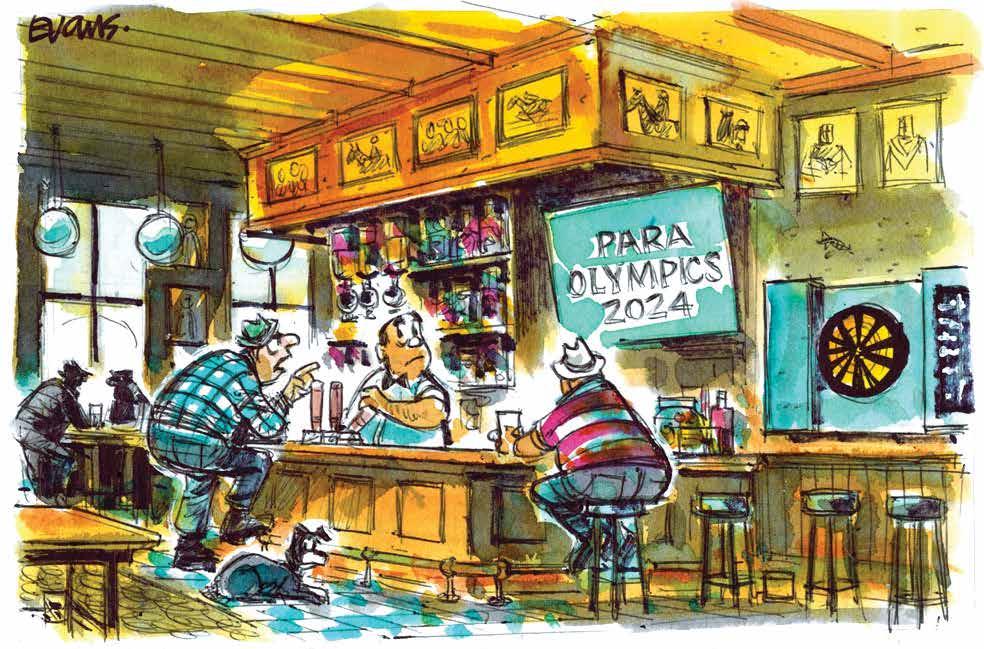
“What
THE WOODEN bicycle enthusiasts over at Greenpeace have yet to meet a government policy or corporate initiative they didn’t hate.
Over the years, their relentless whining - a bit like your neighbour standing outside your window all day with his leaf blower on fullhas become tiresome to the point that your old mate wonders if the public even registers their negative harping anymore. Just in the last three weeks, their press releases to media have opposed, among other things, the Fast Track Bill, opposed the removal of the GE ban, and even opposed Fonterra for pointing out many NZ farmers do in fact already use regenerative practices.
As Kermit once sang, “It’s not easy being green”, but Greenpeace really need to change the record.

LEADER OF the Labour Party and His Majesty’s Loyal Opposition, Chris Hipkins, has formulated a bold strategy to regain power that his rivals won’t have predicted. As far as this mutt can work out, Hipkins’ plan involves making his party unelectable to people who like jobs, running water and electricity. Just as the country was waking up to a ruinous power crisis, made worse by Labour’s oil & gas ban, Chippy effectively declared he would reverse any legislation that might fix the problem. Before the Government had a chance to recover from this blow, Hipkins’ lightening strike had moved on to a declaration that NZ was not in fact a sovereign nation. A plan so cunning you could put a tail on it and call it a weasel.
PRODUCTION: David Ferguson Ph 027 272 5372 davef@ruralnews.co.nz
Becky Williams Ph 021 100 4381 beckyw@ruralnews.co.nz
REPORTERS: Peter Burke Ph 021 224 2184 peterb@ruralnews.co.nz
Nigel Malthus Ph 021-164 4258
MACHINERY EDITOR: Mark Daniel Ph 021 906 723 markd@ruralnews.co.nz
YOUR OLD mate was shocked to learn that two pet projects of progressive dreamers have come a gutser in the real world. Electric cars and ‘fake meat’ were both lauded as world-changing, and lefties and progressives the world over proceeded to ram them down our necks. However, put the last 5 years sales data of fake meat darling Beyond Meat on a chart and it looks very similar to that of EV sales – boom and bust. Once the hype and government incentives were gone, real-world demand for both things crashed. Investors in both categories have been burnt but hopefully learned a lesson: if actors, musicians and Green Party MPs say they’ve found ‘the next big thing’, leave your money in the bank!
AUCKLAND SALES CONTACT: Stephen Pollard Ph 021 963 166 stephenp@ruralnews.co.nz
WAIKATO & WELLINGTON SALES
CONTACT: Lisa Wise Ph 027 369 9218 lisaw@ruralnews.co.nz
Want to share your opinion or gossip with the Hound? Send your emails to: hound@ruralnews.co.nz
A READER recently called out the Hound for not giving Federated Farmers enough credit for taking Otago Regional Council to task on its dodgy rule changes. Fair cop – Otago Feds have led the fight with ORC. They’re again calling on ORC to “delay notification of new freshwater rules and lay the full costs bare for the community to see”. Otago president Luke Kane says the council has been about as transparent as a brick wall. “First they said we were totally wrong, and we didn’t understand, then they said it’s complicated and we were only partially correct, and now they’ve gone totally quiet”. Feds say the sheer arrogance on display from ORC is simply jawdropping. “It’s not just Environment Minister Penny Simmonds waiting for these costings. It’s the entire Otago region.”
SOUTH ISLAND SALES CONTACT: Kaye Sutherland Ph 021 221 1994 kayes@ruralnews.co.nz
DIGITAL STRATEGIST: Jessica Marshall Ph 021 0232 6446


HAVE NGOS had their day?
It is a question posed by David Zurak, also known as The Risk Monger, a retired professor, environmental-health risk analyst, science communicator, promoter of evidence-based policy and philosophical theorist on activists and the media.
He observes that the power of the NGO has waned – at least in the northern hemisphere where groups such as Extinction Rebellion and Just Stop Oil have formed out of frustration at the ineffectiveness of the NGOs.
From chasing whaling ships to sinking the Rainbow Warrior, to climate-related transition strategies, the NGOs have tried to be the voice of civil society and social justice. Zurak suggests that they have positioned themselves as “the thin green line protecting humanity from industry greed and corrupt institutions”.
Part of the problem has been the very success that the NGOs have had – in Zurak’s words, “The passion that drives environmental activists also contained their seeds of destruction”.
European restrictions on agricultural technologies meant farmers were unable to earn a living, and they took their tractors to cities in protest.
“Pushing too hard and fast in imposing transitions to electric vehicles, renewable energy and organic food, with no regard for the costs, actual environmental consequences or public interest have left green NGOs on the wrong side of public opinion”, says David Zurak. He suggests that they can no longer claim to be representing civil society, but rather an ideological affluent elite. We have put increasing regulations around land use and farmers are struggling with economic viability exacerbated by interest rates. A wave of pine tree plantings has been the result in a world where food security is diminishing.
And each time the current Government proposes a change to allow

increased productivity for the sectors that support the economy, there is an outcry from activists.
GE Free NZ, Greenpeace and the Soil Association reacted negatively to the announcement from the Minister for Science, Innovation and Technology, Judith Collins, that New Zealand will be reviewing the regulations around genetic technologies. Despite all the scientific and economic evidence, all three groups have proposed that regenerative, organic systems are the answer, therefore genetic technologies should be avoided.
Regenerative and organic systems are certainly the answer for some people in terms of philosophy, lifestyle, debtloading, the topo-climate in which they are operating and their neighbours (who might or might not be providing a buffer from pests and diseases). However, it has been shown both nationally and globally that yields tend to be reduced, and costs of production can be higher. Achieving a premium for the product offsets economic loss, but if all production systems are ‘regenerative organic’, how could there be a premium?
The Government’s aim in ending New Zealand’s nearly 30-year ban on gene technology outside the lab is to enable scientists “to make advances in healthcare, adapt to climate change, protect our unique environment, lift our agricultural productivity and boost exports”.
The change in rules outlined brings New Zealand into line with many other countries, including trading partner Australia, and establishes a regulator dedicated to assessing and managing potential risks to human health and the environment.
In launching the ini-
tiative, Minister Collins said that “The changes we’re announcing today will allow researchers and companies to further develop and commercialise their innovative products. It can also help our farmers and growers mitigate emissions and increase productivity,
all of which benefits our economy”.
Building a stronger, more productive economy that lifts real incomes and increases opportunities for New Zealanders is an imperative for the Government and for New Zealanders. A stronger economy
will allow improved educational achievement and health services, as well as all the other public good activities supported through taxes.
In the future, Zurak suggests that NGOs will continue to exist in one form or another, but their influence and impact will
no longer be felt, their campaigns no longer trusted and their role in the policy process no longer necessary.
The New Zealand NGOs might learn from his observations; some members of society already have.
• Dr Jacqueline Rowarth,
Adjunct Professor Lincoln University, and educated as a Public Good Scientist, is a director of DairyNZ, Ravensdown and Deer Industry NZ. She is also a member of the Scientific Council of the World Farmers’ Organisation.
@rural_news

Choose the visible spray-on flystrike solution
The highly visible red colour of StrikeForce® -S means you know where you’ve applied it, and makes it easy to identify which animals you’ve treated. Plus, with up to 18 weeks meat protection and just 14 days meat withholding period, it provides flexibility for all classes of sheep and any length of wool.
Have a conversation with your vet today.

NOT LONG after I started farming, I needed some bridge stringers to cross a small, on-farm stream.
I had seen a pair in the local council yard. I called the lady on the front desk – she was both telephon-
ist, receptionist as well as teamaker and mail lady. She put me through to the chief engineer (now known as CEO) who knew the stringers I sought, put a price on them and said one of the council trucks could drop them off next week. He enquired of my
parents. “I always stop off for a cuppa when I am out your way”. He asked my reaction to the council holding rates to the same level as last year. He suggested they may have to increase them the next year by 1 to 1.5% to cover some road upgrading and bridge renewals.
They were the “good old days”. Simple, straightforward, very ‘local’ government. Bureaucrats were few, rarely seen and rarely heard. We elected the district’s best who spent a day a month away from the farm doing the business. Then came the
RMA. The world changed. The outcome has been a substantial power shift. Elected councillors, even elected Members of Parliament, have seen their relative influence wane and the new phenomenon – the technocrat or specialised bureaucrat –has emerged.
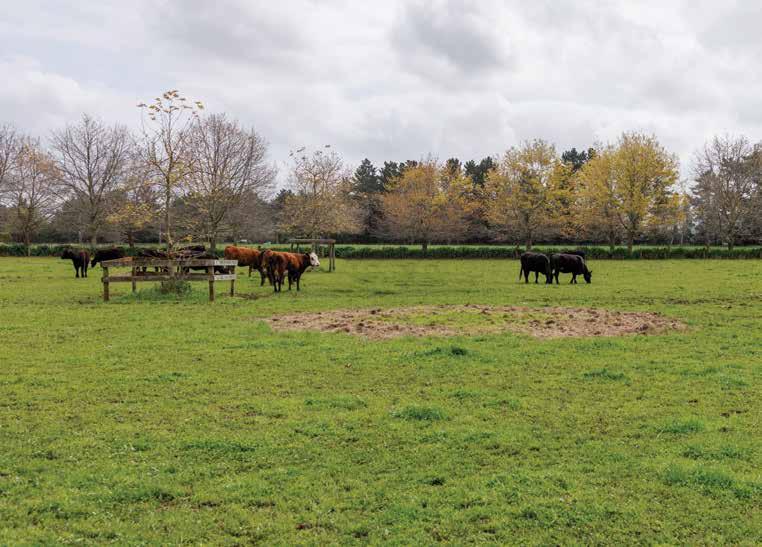




Central government with ideological agendas, pressure groups to appease, vote-catching promises to fulfil handed down even more requirements of local authorities. The snowball gathered speed. In a year when inflation was in low, mid-single numbers, some councils are asking for over 20% income increases. Bureaucrat and technocrat numbers have increased wildly. The numbers are startling and the effect on those who cannot pass on costs, like farmers, is traumatic. Besides the disturbing cost increases are the time needed to comply, the corrosive impacts of frustration, anger and often utter helplessness, the challenge of uncertainty, and the stress on family and associates is taking a heavy toll.
Farmers are often isolated, too busy and too tired to socialise, have partners taking jobs in town in order to keep the farm afloat and are unaccustomed to “book” work. They went farming to avoid the dullness and frustration of administration, endless meetings, paperwork and formfilling. They hear the coalition Government’s messages of reform and removing unnecessary regulation but down on the farm it barely registers with councils and bureaucrats marching to the beat of their own technocrat drum.
Farmers have multiple traits to focus on with each one impacting negatively or positively if pursued on its own. It takes generations to gradually build a genetic profile that meets a farmer’s strategy. Chasing a methane reducing rainbow is an expensive gamble
farmers cannot afford to take as they risk losing decades of genetic gains for productive traits that have made Kiwi farmers the most efficient and effective pastoral farmers in the world.
Agriculture is becoming the plaything for technocrats with no direct financial stake in the land. There is little accountability. Few cost benefit analyses. These regulation tsars are dreaming up more and more impositions for famers to take aboard.
The pressure is showing up in increasing levels of financial problems mental health issues and aging farmers. SNA’s, Fresh Water Plans, Farm Plans, Riparian planting, stock exclusion, slope restrictions, wintering requirements, ‘te Mana o te Wai’ and more.
The goose that kept laying all through covid and earns the lion’s share of our export income is going under.
The coalition needs to take greater responsibility for removing this pressure, curtailing the free-ranging powers of local authorities, wake up to the truth and the facts involving ruminant methane, learning to rely more on voluntarism rather than rules, and respecting private property rights – still the cornerstone of our democracy. Prime Minister Luxon got the words right at the Local Government Association conference – now he must get the actions right.
Another meteor that removes the Tyrannosaurus Technocrat is overdue.
• Owen Jennings is former National President of Federated Farmers and ACT MP.
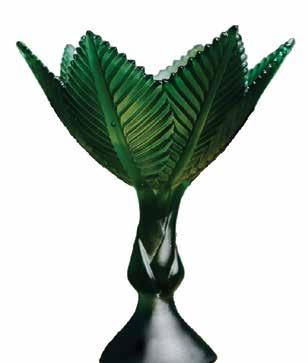
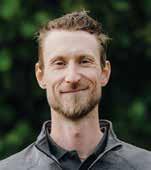


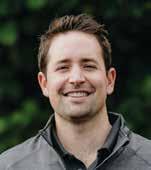

THE RECENT Tractor and Machinery Association (TAMA) conference in Wellington was signalling cautious optimism on the back of rising milk and store cattle prices and drops in interest rates.
Association president Jaiden Drought was using the term of “crest of a slump” to suggest things were moving in the right direction, which will be a welcome move for the country’s tractor and machinery importers and dealers, who have felt the brunt of the financial downturn over the last twelve months.
The depth of that slump makes for interesting reading, that to the year ending June 30 shows that the estimated
sale value of the agricultural machinery has fallen by 10% to $503 million, with tractors said to be $435m (-6.5%) and balers and hay tools at $68m (-27%).
The reality is much more interesting, when it becomes obvious the rapidly rising purchase prices camouflage the fact that tractor unit sales had fallen by around 27% and balers and hay tools have fallen by 45% over the previous year – the latter representing the biggest drop in sales since records began.
The breakdown of tractor sales (to year ending 30 June) saw recorded sales of 2982 units, made up of 856 tractors in the 0-60hp bracket, 482 from 60 to 100hp, 1315 in the popular 100-200hp class and 329 units above 200hp.

The last time this level of sales was seen, was in the 2015/16 calendar year and compares to a peak of 4538 in 2021/22. Baler and
hay tool units peaked at 904 units.
Looking at sales on a national basis, tractor sales in the North Island
totalled 1876 units, a drop of 22.8%, while the South Island ran to 1106 machines, a fall of 29.1%.
Balers and hay tools saw
406 units sold in the North Island and 498 units sold on the mainland.
At a regional level, all
parts of the country saw unit numbers dropping compared to the previous year, with the East Cape region in the north seeing the greatest drop of 41%, no doubt in the aftermath of Cyclone Gabrielle, and Wairarapa showing the least fall of 18%. Further south, Mid-Canterbury was 48% off the mark, with a 49% fall in the key 100-200hp sector, compared to its neighbour, South Canterbury, who fared much better with a drop of only 14%.
The two largest regions for tractor sales, Waikato in the North Island and Southland in the South Island saw sales levels that mirrored the fall in milk prices and inflated input prices, with falls of 29% and 30% respectively.
@rural_news
facebook.com/ruralnews


THE DE Leeuw family has been running their dairy farm in Kaitake, Taranaki, for over 20 years.
Starting with 70 hectares, they have expanded their operation to include 13 hectares of support land for wintering. The farm is a testament to their dedication and hard work, as they now milk 235 cows with plans to increase to 250 in 2025.
André De Leeuw, originally from Holland, grew up on a dairy farm that had been in his family for three generations. Seeking more opportunities and fewer regulations, André moved to New Zealand in 1999.
“Farming was always a part of life,” André says.
“We didn’t go on holidays much, maybe once or twice a year for a day. It wasn’t as easy to leave and get off farm compared to now.”
Before switching to robots, André and his family milked in a 22-aside herringbone.
However, the challenges of conventional milking, such as the need for constant manual labour and reliable staff, prompted André to consider robotic milking systems.
“We saw robots at field days and in a few farms in Holland,” André explains. “After discussing it with Steve Bromley, we realised that with our

numbers, the cost difference between a conventional shed and a robotic one wasn’t that significant.”
The decision to switch to robotics was driven by multiple factors. They wanted to future-proof their farm, manage labour more easily, and reduce the physical strain on themselves, André says.
“Plus, with robotic milking, you get milk information from every individual cow, every milking. The level of quality control and the ability to feed cows according to their production was something we couldn’t achieve with a conventional system.”
Implementing the robotic system required careful planning. “We set a date in advance, and about a week before, everything was doublechecked,” André recalls.
“The transition went smoothly, and the cows adapted within a month.
“At the beginning I thought you had to be good with computers and I didn’t like them, but the computer program is a lot easier and user friendly than I thought.”
Since switching to robotic milking, the De Leeuw farm has seen numerous benefits.
“The cows are happier and there’s a lot less lameness. That’s some-
thing that I didn’t realise robots would make that much of a difference to.
After the robots, lameness pretty much disappeared, so that was great.”
Andre adds that the individual take-up of the cups ensures there’s no over-milking, and cows are only milked when needed.
One of André’s favourite aspects of the robotic system is the flexibility it offers.
“I can make breakfast for the kids or take them to school,” he says. “There’s less strain on my body, and we have more information on our animals. We can now

feed high-producing cows better, and our production gains have come out of being able to look after these cows better.”
Looking ahead, the De Leeuw family has ambitious plans for their farm.
“We’re ideally located, not too far from town,” André explains. “Our goal is to increase our herd from 240 to 300 cows and fully utilise our four robots. If more land becomes available, we might expand further.”
Andre says his goal has always been to do well over 100,000 milksolids but they found it hard with a conventional shed.
“You’re limited on what you can do; you can’t reward those higher producers unless you make separate groups. We’ve done that sometimes, split up the herd for preferential feed, but we still struggled to get production up.
“But with this system, we’ve had better production.”
The De Leeuw family’s journey from traditional milking to robotics showcases their adaptability and forward-thinking approach.
Their story is a testament to how embracing technology can lead to a healthier, more efficient, and more sustainable dairy farming operation.

TARANAKI’S ZERO
Possum project has entered a new phase, featuring a high-tech farmland barrier and a few squirts of mayo.
Taranaki Regional Council’s Towards Predator-Free Taranaki team has been working to eradicate possums between the Timaru Stream and the Stony River since January 2023.
The original farmland area between the Timaru and Oākura River has had no resident possum population for more than three years.
So far, they’ve removed almost 3500 possums from the extension area with only the most wily or lucky left, according to Towards Predator-Free Taranaki programme lead Nick Heslop.
“We are down to chasing individual possums now, there are so few it’s at the point we are starting to name them!”
While that work continues with the aid of cameras, scat detection dogs and targeted trapping, attention has also turned to the design and creation of a 3km barrier stretching across private farmland, south-east of the Kaitake Range.

Self-reporting cameras are installed on trees, pointing at an automatic lure dispenser that squirts a small taster of mayonnaise each evening
“Mayonnaise is delicious and high in calories, which possums crave in winter. Trials show it’s a highly effective lure,” says Heslop.
The cameras take a photo when movement is detected, with the footage reviewed remotely. The


initial goal is to determine how many cameras are needed to detect and then remove possums trying to re-enter the cleared area. The lessons learned will inform future operations both in Taranaki and around the country.
“We want to understand the density and movement of possums and get a clear picture of what is happening at that edge of the zone. We know how to remove those possums and will do it eventually but for
now gaining knowledge on how to keep them out is just as important,” says Heslop.
“We were the first in New Zealand to attempt possum elimination on farmland at such a large scale (the total area is 9500ha), so sharing what we are learning is important and one of the reasons we receive funding from Predator Free 2050 Ltd.”
Self-setting traps are also being strategically deployed along the barrier.
“The new barrier will in time become our main incursion response tool, with intruder possums tracked and removed, as we are currently doing in the main Zero Possum area.”
Landowners have been supportive, allowing the team to set up cameras and return to track down possums or maintain equipment. Work has slowed recently as farmers focus on calving, but Heslop says the barrier should be complete by the end of the year.
The project is extra special for Zero Possum project lead Cody Luckin, who grew up near Ōkato and still lives within the Zero Possum zone.
“I applied for this job because I am from here, I went to school here, my family farms here and I am really passionate about this area.
“I want to see my home possum-free so to be part of what is happening here is really rewarding.”
He says the project’s success so far shows what is possible.
“Maybe one day we could do the whole Taranaki ring plain –from river to river. How cool would that be?”


ASHBURTON BASED
Carrfields has signed a deal with Kubota NZ for the retail distribution rights of Krone products in Canterbury, effective September 1.
Krone farm machinery has been manufactured in the small village of Spelle in northern Germany for more than 100 years. Its globally renowned products include disc mowers, tedders, rotor rakes, forage wagons, round and square balers and forage harvesters.
Carrfields will provide potential and existing Krone customers with sales, parts and specialist servicing of Krone products from its Ashburton and Templeton locations with a


Craig Carr, group managing director of Carrfields, says this decision is a positive step in the evolution of both busi-
“Krone, like Carrfields, is a family-owned business with a comprehensive range of products that are an excellent fit
folio which includes the well-established global brands of Horsch, MacDon and Novag,” he says.
ity product suite that is a natural replacement for the range of equipment that we used to represent, especially for our



“We are delighted to offer a very high-quality product suite that is a natural replacement for the range of equipment that we used to represent, especially for our agricultural contractors and large-scale farmers.”
John Tulloch, Krone NZ sales manager, says they are excited and pleased to now have Carrfields as part of their network.
“While there are many synergies between our businesses, we are especially impressed with Carrfields’ focus on looking after their customers and understanding what it takes to give great service.
“We observed this from the sidelines over many years. The great
tion they achieved in the past have clearly shown that Carrfields is an ideal partner for us as we look to build our presence and customer base across Canterbury.”
Due to current arrangements with Landpower, which took back their Canterbury Claas Harvest Centre franchise in 2023, Carrfields will be unable to sell Krone forage harvesters until January 2026. In the interim, sales of forage

NEW HOLLAND and Case IH are introducing new advancements in its precision technology stack to make farming easier and more efficient for its customers.
FieldOps and ‘Connectivity Included’ have become part of duo’s technology offering that is designed to help customers have a seamless experience across New Holland and Case IH’s digital and connected platforms.
Now live and available for download in the App Store and Google Play, FieldOps is a farm management tool, said to help farmers expand their productivity from anywhere at any time, by taking their farm opera-

tions data and details and bringing them into one platform that is easy to use, understand and connect.
Built for users at every skill level, crop specialty, region and size of operation, by using a mobile connection or Wi-Fi, Australasian farmers will be able to monitor every machine, remotely view in-cab displays to offer better feedback to their operators and see layers of agronomic data, in one
place, allowing more to be done with fewer clicks.
Customers can download the new mobile app to view their connected machines, while existing MyPLM Connect and AFS Connect users can safely transition to FieldOps, knowing their data will already be there when they log in.
To make data management easier, FieldOps has over 40 API connections available globally, allowing for integration
with third-party digital platforms. Customers can choose how they own their data, deciding to import it all into FieldOps or to export the FieldOps data to another platform. This removes the need for unnecessary data re-entry, making the overall digital experience easier across an entire farming operation.
‘Connectivity Included’ is a new feature that grants customers limitless connectivity
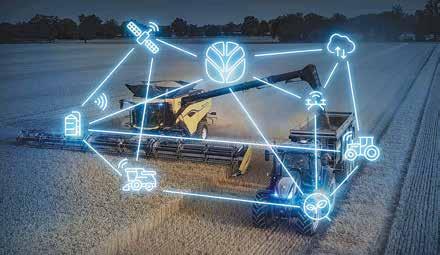
with no recurring subscription fees, on qualifying machines built on or after October 1, 2024. This offering provides data and remote support to farmers without managing or renewing a subscription.
Said to be a completely new approach to connectivity that makes data accessible by simply
OUT OF more than 80,000 entries, Daniel Neil from Piopio has been announced as the lucky winner of the Isuzu D-MAX LX Double Cab 4WD Ute in this year’s Fieldays Ute giveaway. The prize package, valued at over $63,990, includes on-road costs, 12 months of registration, a full tank of fuel, and a comprehensive 3-year/100,000km warranty.
Daniel’s initial reaction to winning the ute was one of disbelief, thinking it was a joke when he received the call from New Zealand National Fieldays Society chief executive, Peter Nation.

“When I told my wife Gina, she thought I was having her on! The kids were excited but not sure whether to
it or not,”
making it a baseline feature on the selected models, it can expand the reach and utility of connected features.
Customers with existing machines and capable telematics modems can purchase Connectivity Included functionality for a one-time fee, via their local New Holland or Case IH dealer.
cross cows on a leased 240ha dairy farm, with an additional 120ha leased for dairy support and beef.
“The Isuzu will definitely be put through its paces with farm life. There’s always something to tow or pick up and plenty of hills on the farm to climb. Whether it’s kids or animals, there’s always something to run around after. I’m also looking forward to trying out its towing capabilities with the caravan.”
Daniel, who was raised on a farm in Taranaki, has been a regular at Fieldays for over a decade. He came to the 2024 event for the day with his
Jeremy Duniam, head of Precision Technology at CNH ANZ, says, “We are offering our customers a tool that adds significant value and ease of use. Through the engagement of many Australian and New Zealand customers we had the opportunity to shape this platform via the extensive beta testing completed”.
brother and two local farming mates.
“I go to Fieldays for a day off the farm,” Daniel said. “It’s interesting to see what innovation, technology, and equipment is out there and what could work for us in our farming operation. It’s also a chance to catch up with our rural providers, like the bank.” Ross Sommerville, general manager of Isuzu Utes New Zealand, expressed his support for Daniel’s win. “The D-MAX is built tough and has the specs to handle farm life with ease. Whether taking care of day-today tasks or the gruntier jobs, it’s up to the challenge.” – Mark



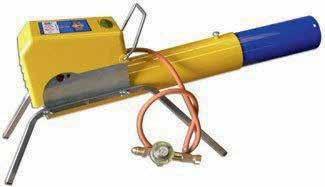
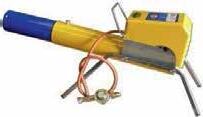

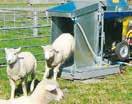



























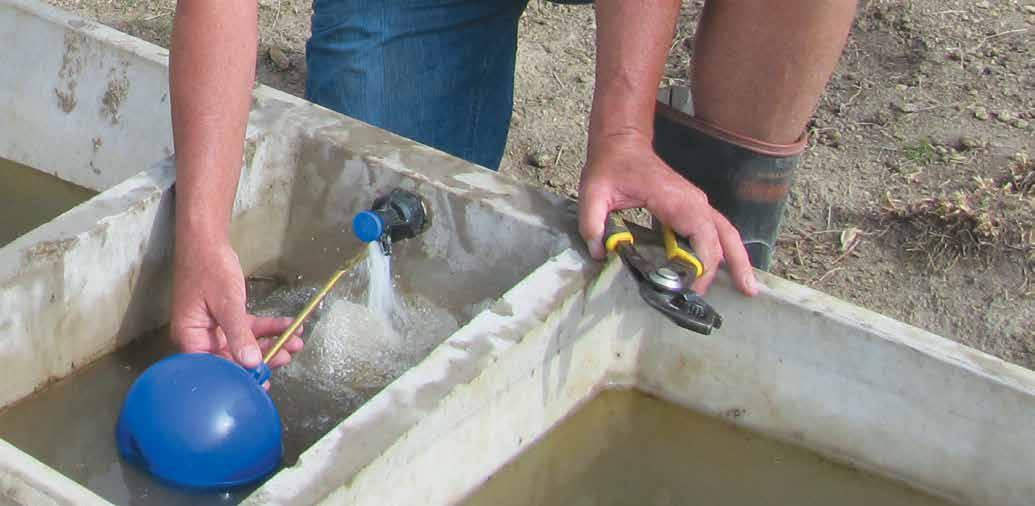
Compact, high flow & extremely versatile 34 L/min @ 29 PSI


Slipper Fit Piston helps prevent stuck valves 188 L/min @ 29 PSI



proof & self cleaning
L/min @ 29 PSI

